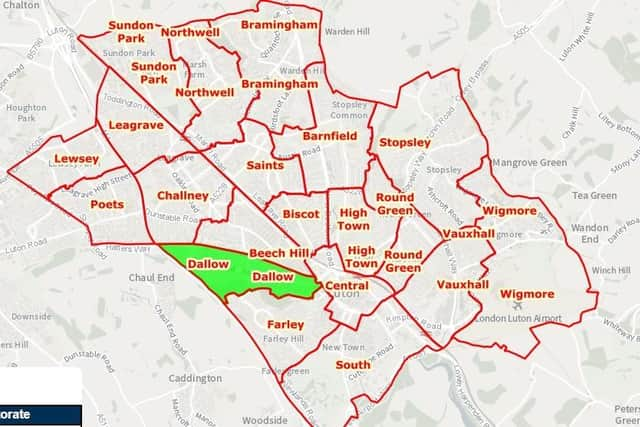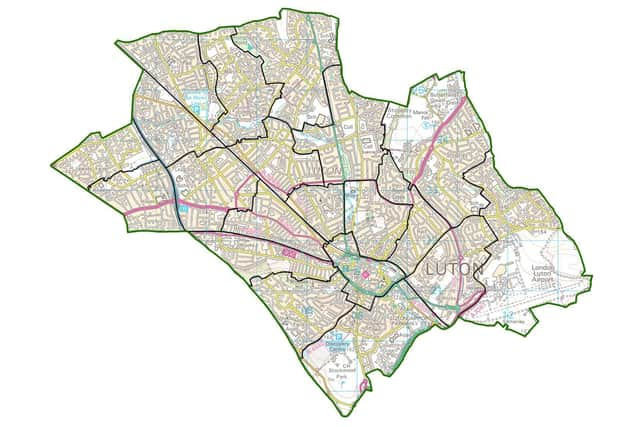Luton's political boundaries are on the move. But how will they affect you?
and live on Freeview channel 276
Luton electors could find themselves in different wards after the latest report from the Local Government Boundary Commission.
The move comes to ensure each councillor on Luton Council has roughly the same number of electors in each ward.
Advertisement
Advertisement
The names of Limbury and Icknield will disappear, to be replaced by two wards of Bramingham and Barnfield in the case of Icknield.


And Crawley, associated with slave trader William Crawley, will now be known as Vauxhall.
In 2021 the town had 144,630 on the electoral roll, that is expected to increase to 165,936 by 2027.
Earlier suggestions for wards of Bury Park and Wardown were rejected in favour of Beech Hill and Biscot respectively.
Advertisement
Advertisement
A redrawing of the political map means although the town will retain the same number of councillors, the boundaries of all wards have been redrawn.


The boundaries of Biscot ward have been modified to include all the streets branching from Biscot Road, and those of Wigmore ward to include the entire Telscombe Way estate.
Forty people and organisations made comments to help decide the new wards.
Advertisement
Advertisement
The final recommendations from the Commission state that residents should be represented by 48 councillors, the same as the current arrangements.
Luton should have 20 wards, one more than there are now formed, of 12 two-councillor wards and eight three-councillor wards. The boundaries of all wards should change; none will stay the same.
Publishing the recommendations, Professor Colin Mellors, Chair of the Commission, said: “We are very grateful to people in Luton. We looked at all the views they gave us. They helped us improve our earlier proposals.
“We believe the new arrangements will guarantee electoral fairness while maintaining local ties.”
Advertisement
Advertisement
The Local Government Boundary Commission is the independent body that draws these boundaries. It has reviewed Luton to make sure councillors will represent about the same number of electors, and that ward arrangements will help the council work effectively.
The Commission has made further changes to its earlier proposals. Details can be found on its website at https://www.lgbce.org.uk/all-reviews/eastern/bedfordshire/luton.
Parliament now needs to agree the changes. The new arrangements will then apply for the 2023 council elections.